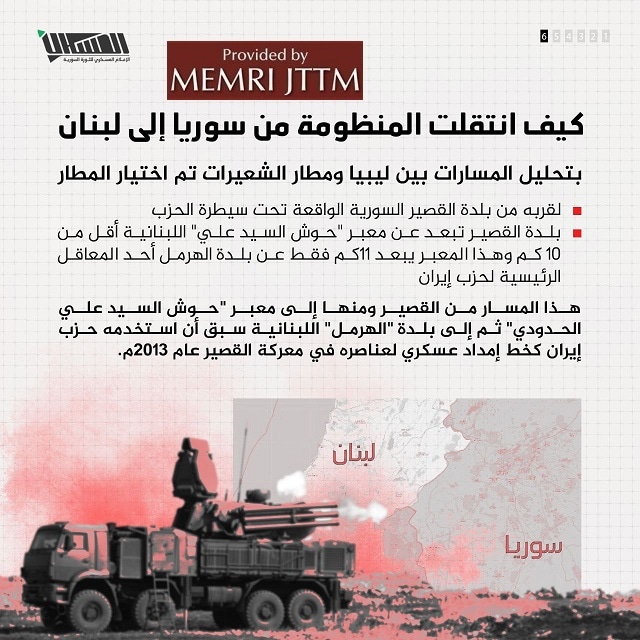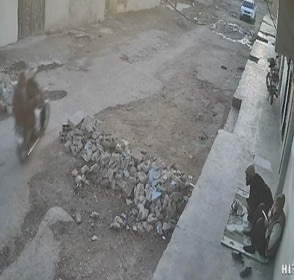The following report is now a complimentary offering from MEMRI's Jihad and Terrorism Threat Monitor (JTTM). For JTTM subscription information, click here.
On December 15, 2023, the pro-Idlib-based Hayat Tahrir Al-Sham (HTS) Al-Askary Media published a series of infographic posters on Telegram stating that: "Russia equipped the Lebanese Hizbullah with advanced air defense systems via the Wagner Group in coordination with the Syrian regime."[1]
The posters cited a November 2 Wall Street Journal article, which said: "An American intelligence report revealed the possibility of Russia supplying a Pantsir-S1 air defense system in conjunction with the escalation of tensions on the southern border of Lebanon."

Arabic Intelligence Platform Confirms WSJ Story
A second poster said that EKAD, an Arabic open-source intelligence platform, worked to verify The Wall Street Journal story using several methods. The most important one was tracking the navigation movement of the weapons from the areas held by Wagner to Syria.

Air Bridge Between Libya And Syria
In a third poster, the outlet said: "An intensive air bridge was built between October 16 and November 27 between Wagner sites in Benghazi, Libya, and the Shayrat military airport south of Homs [in Syria], which is under Iranian control.
"The first plane, (Ilyushin II-76), which belongs to the Wagner Air Fleet, made eight flights between Benghazi and Shayrat Airport from October 21 to 27. All of the eight flights used the same route."

A second plane belonged to Syrian Airlines and was identified as "affiliated with the Iranian Revolutionary Guard," according to a fourth poster, which added:
"This plane made eight flights between Benghazi and Shayrat Airport, starting on November 22. It followed the previous plane's tactic of concealing its take-off location and destination."
The same poster added that a third plane, affiliated with Syrian Airlines, and also linked to the Iranian Revolutionary Guard, made eight flights between Benghazi and Syria between October 16 and November 27, including six flights to Damascus Airport and two flights to Shayrat Airport.

Why Shayrat Airport?
Another poster explained that Shayrat Airport was chosen for the following reasons:
"Due to its proximity to the Syrian town of Qusayr, which is under the control of the party [i.e., Hizbullah], the town of Qusayr is less than 10 km away from the Lebanese crossing of 'Housh al-Sayyid Ali.' This crossing is only 11 km away from the town of Hermel, one of the main strongholds of the Iranian Party [i.e., Hizbullah.] This path starts from Qusayr and goes from there to the Housh Al-Sayyid Ali border crossing, and then to the Lebanese town of Hermel. The path was previously used by the Iranian party as a military supply line for its members in the Battle of Qusayr in 2013."

A final poster detailed the specifics of Pantsir-S1, pointing out that it is a "Russian-made surface-to-air defense system designed to intercept fixed-wing aircraft, helicopters, and cruise missiles."

[1] Telegram, December 15, 2023.
The full text of this post is available to subscribers.
Please login or register to request subscription information from MEMRI





